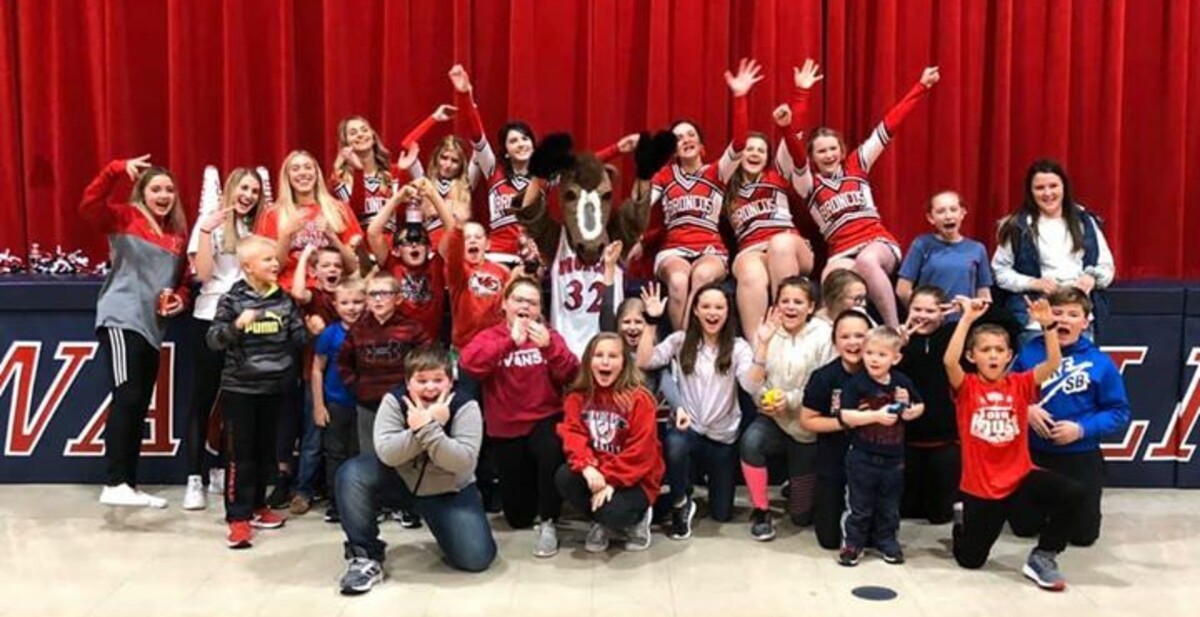How to Deepen Your Relationships With Children
Relationships can influence children's success and well-being in life. Here are five elements that children need in healthy relationships with adults.
EUGENE C. ROEHLKEPARTAIN on December 06, 2021
How to Deepen Your Relationships with Children from Greater Good Magazine
December 1, 2021
In 2017, my colleagues and I at Search Institute commissioned FrameWorks Institute to ask people on the street what relationships they thought young people needed in their lives, particularly with adults beyond their families. We wanted to understand the gap between their thinking and what research says about the importance of adult-youth relationships.

But people were mostly stumped.
In fact, even within families, most only could talk about the importance of love and, perhaps, discipline in describing relationships with parents. It was even harder for people on the streets to think about what might be done to improve how we build relationships with children and youth.
The good news is that we don’t have to leave relationships completely to chance. Just as botanists can tell us a great deal about different roots, how they work, and what they need to thrive, a growing body of research tells us about different kinds of relationships, how they affect us, how they work, and how we can nurture them so that they—and we—thrive.
For eight years, we at Search Institute have been conducting research with youth, parents, teachers, youth workers, and others to tease out what makes a relationship make a difference in the lives of young people. What do parents, teachers, youth workers, friends, and others do as part of their relationships that contribute to children and youth thriving in life?
In the process, we have identified five elements of a “developmental” relationship—perhaps they are five types of roots!—that are vital to young people growing up well, avoiding high-risk behaviors, and thriving in their journey to adulthood. Furthermore, these elements consist of specific actions we can learn and do more intentionally in our homes, schools, organizations, neighborhoods, and communities.
1. Cultivate thriving relationships by expressing care
Expressing care is the foundation of a developmental relationship. It focuses on the emotional bonds of mutual enjoyment, self-disclosure, and trust that are expressed in actions such as:
- Being dependable by showing each other that you will do what you say you will do.
- Listening and really paying attention when you are together.
- Believing in each other, making each other feel known and valued.
- Being warm, letting each other know that you enjoy being together.
- Encouraging each other, by celebrating efforts and achievements.
As one parent said about her daughter in a focus group we conducted, “I’ve made it my goal that I will be there 150% for her, no matter what. I don’t care what we have to go through, we’ll be there. You know? I’ll give her the shirt off my back to show her that she’s always got us.”
Mutual expressions of care at home and elsewhere become the primary way for children to learn character strengths such as love, compassion, and empathy. Few experiences are more powerful as a parent than for your teenager to initiate a hug, an expression of love, or an act of compassion that comes from their heart, not from a sense of obligation!
2. Nurture relationships by challenging growth
Deep relationships don’t end with unbridled care. People (including parents and their children) who trust and respect each other have high expectations consistent with the other’s own goals. They challenge each other to grow, hold them accountable, and then are there for them when things don’t go well. Researchers Brooke Feeney and Nancy Collins describe this as “encouraging a close other to challenge or extend [themselves] to grow as an individual . . . and providing encouragement to embrace even small opportunities that may be stepping stones to bigger ones.”
There are four actions you can take as part of challenging growth:
- Expecting each other’s best so that you can each live up to your potential.
- Stretching each other to go further.
- Holding each other accountable for your actions.
- Reflecting on failures so you can learn from them.
“By setting goals that are high for myself,” one parent reflected, “and allowing myself to fail at them sometimes, that’s motivating to her. If she sees me and other people around her setting high goals for themselves and figuring out how to get there, that sort of sparks that natural competitiveness in her to do the same.”
Encouraging others to keep pushing toward their goals also helps us cultivate honesty as we learn to offer constructive feedback when someone isn’t working up to their own expectations or potential. We also develop patience—with ourselves and with others—as we struggle through challenges and setbacks that are inevitable on the path toward goals.
3. Strengthen relationships by providing support
In addition to the emotional support that is part of expressing care, you can also offer practical support—helping each other get things done, overcome obstacles, and work toward goals. Here are four specific actions you can take to provide support in your relationship with a young person:
- Helping each other navigate through hard situations and systems.
- Boosting each other’s confidence to take charge of their life.
- Advocating or standing up for each when they need it.
- Setting boundaries that keep each other on track.
For some young people, support may involve helping them develop plans, budgets, or schedules. For still others, it may involve helping them navigate unfamiliar or resistant systems, or standing up for them when they encounter biases, barriers, and other challenges that undermine growth and well-being. For others, it may mean setting limits so they stay on track. For example, “If I want to do something or make a goal, my parents will like look into it and give me ideas and help me along if I’m stuck,” said one young person during a focus group.
Providing support shows the importance of the character strength of reliability, which is also reflected in expressing care. By providing support, we can become aware of how our own thoughts, actions, words, and intentions affect others as well as our own responsibility to ease the experiences of others.
4. Deepen relationships by sharing power
Every relationship includes a power dynamic, though we may not like to think about it. In many cultures, the hierarchical nature of the parent-child relationship is assumed and unsaid, though perspectives often vary even within cultures.
Developmentally, young people need to take on more decisions and responsibility as part of the process of growing up. This affects the relationship, most often deepening it as the relationship becomes more mutual through these kinds of actions:
- Respecting each other, taking them seriously, and treating them fairly.
- Including each other in decisions that affect them.
- Working with each other to solve problems and reach goals.
- Creating opportunities for each other to take action and take the lead.
Sharing power is grounded in humility and mutual respect. Humility—the opposite of arrogance—sees the value in others as well as our own limitations, which creates an openness to sharing power. Similarly, developing mutual respect grows out of seeing others take on responsibilities and solve problems; conversely, we will only give others those opportunities if we respect them.
When we talked with parents of teenagers who have experienced sharing power, they say things like: “As they’re getting older, just letting them understand they do have some control, and we do expect them to take that control and make the right decisions with it.”
5. Broaden relationships by expanding possibilities
Young people shape who they are and who they can and want to be to a large measure in and through conversations with people they trust. Thus, a thriving relationship is not closed but open, helping the other person see possibilities for themselves and the future. This occurs through actions that expand possibilities:
- Inspiring each other to see possibilities for the future.
- Exposing each other to new ideas, experiences, and places.
- Connecting each other to people who can help them grow.
Expanding possibilities is not just about introducing each other to something new they might like. It’s also about introducing challenging ideas that strengthen their capacity to think critically and understand the world. Indeed, being able to encounter new perspectives and coordinate them with your own is a particularly important skill for character development and identity. Expanding possibilities helps you both develop curiosity and a sense of purpose as their minds are opened to new opportunities and their hearts and imaginations connect with possibilities that beckon them to work toward meaningful aims for themselves and the greater good.
Until young people encounter challenging perspectives and issues, they may never learn to articulate their own values effectively. And it’s best for them to do so in the context of a trusting relationship within the family, with a teacher, or with another trustworthy friend or adult.
Some parents may not be comfortable with their teens talking with other adults about important issues. But many of the parents we talked with had learned that it was important. “Another perspective is always good for kids,” one said. “Most of the time they don’t want to come talk to their moms!—or they don’t want to talk to their dads; they might feel comfortable talking to somebody else.”
Three questions to get started
Most parents (and people who work with children and youth) find that they take many of these actions in their relationships without thinking much about it. But some may be less intuitive or harder. Try out the Relationship Check as a tool for self-reflection about your relationships with young people.
I would offer three questions to think about as you consider where to start:
- In what areas might you need to be more INTENTIONAL? Some elements of a developmental relationship may be easier for you to do than others. For example, you may find it easier to challenge growth than to share power with your child or with the students in your class. How might you experiment with rebalancing your “relationship style” to include dimensions that may currently be missing but could enrich your relationship and help their development?
- How might you become more RESPONSIVE in your relationships? Being responsive involves paying attention to the cues and responding in ways that the other person most needs at the time. (We don’t all need the same amount of all five elements all the time.) Sometimes they need a boost of care, warmth, and encouragement. Other times, they may need to be empowered to step up, make decisions, and take the lead. The opportunity lies in listening and getting to know someone well enough to be able to respond in ways that fit what they need in the moment, even if they can’t articulate it.
- Who might be harder for you to connect with, and how could you become more INCLUSIVE? We tend to gravitate toward some children and teenagers more than others—usually the ones who fit our style better. But you can connect with young people across multiple dimensions of relationships. Perhaps a teen hasn’t gravitated to your warmth and encouragement, but is primed to step into shared decision making or exploring new ideas and places.
I like to putter around in my flower beds, mostly growing perennials that can survive a Minnesota winter. Sometimes I’ll get a new plant, place it in the soil, and wait for a couple of years, only to see nothing really happen with it. So, I dig it up and move it somewhere else. When I’m lucky, I start to notice new sprigs, then leaves, then branches, and perhaps, eventually, some flowers.
What changed? I only moved the plant by a few yards. But it ended up where its roots received the nourishment they needed—the right amount of water, phosphorus, and other nutrients essential to thrive. None of what was happening was visible, but it was powerfully transforming a plant that seemed hopeless only a few feet away into a thriving centerpiece of the garden.
Developmental relationships can have the same kind of benefits. By inviting us to connect within and beyond our families, they not only have the potential to relieve today’s epidemic of loneliness that undermines our well-being; they also have the potential to draw us into a future of thriving together, enjoying being nourished in diverse, relationship-rich families, schools, organizations, and communities.





